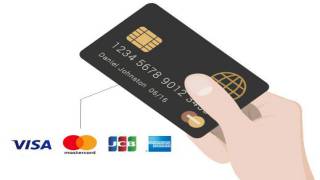How to Choose the Right Savings Account for Your Needs
Savings accounts are some of the most common and advantageous account types offered by banks. Why? Because you earn interest in your savings by simply keeping your money in it.
However, there are a lot of options to choose from, which makes choosing the best account difficult.
So if you are looking to build an emergency fund or save up for a big purchase in the near future, go for a savings account. Let’s walk you through the types of accounts available at banks and how to choose a savings account that’s appropriate for you.
Options for Savings Accounts
There are varied types of savings accounts available, with some of the most popular ones mentioned below.
●Basic Savings Account: This is a standard account option that usually does not have a minimum daily balance requirement. They are readily offered by most traditional banks and credit unions. Nevertheless, its annual percentage yield (APR) is typically less than other types of accounts.
●High-Interest Savings Account: A high-interest savings account has a better APY than a basic savings account. It allows funds to grow more quickly. They are mostly found in online banks as well as some physical locations, which may provide these loans under certain balance conditions.
●Jumbo Savings Account: This savings account is designed for people with significant assets, and the minimum deposit required to open such an account is hefty as it ranges from $100,000 upwards. It usually has an annual percentage yield (APY) that exceeds most other types of savings accounts.
●Money Market Account: A checking/savings hybrid, a money market account has about the same APY as savings accounts but allows customers to access their funds in more ways, such as debit cards or checks depending on where you bank.
To find the right savings account beneficial for you, here are six common questions to ask yourself to make things clearer.

Which is your preference—branched access or high-year percentage yields?
When choosing a savings account, it is common to be faced with the choice between easy access through branches or high interest rates.
If you are looking for the highest annual percentage yields (APR), then online high-yield bank accounts are an ideal option. The reason behind this is that such banks do not incur costs from physical premises, which allows them to offer better rates on deposits.
Online savings accounts are best for the tech-savvy. They expect higher returns and want to do most banking from home. These web-based banks usually have many ATMs but no branches.
On the other hand, conventional banks that have their own branches allow customers to talk directly with employees. There are also other services that may be provided by the traditional banks, such as loans, credit cards, and brokerage services.
Although these banks generally provide online account management options, their savings products typically carry much lower APY’s compared to those offered by internet-only competitors.
What are the fees or minimum balance requirements?
Different from checking accounts, savings accounts have fewer fees, but many of them charge a monthly fee. This should not discourage you. The trick is that you must be able to meet their terms to avoid penalties.
Some of the common ways you can avoid a monthly fee include linking to a checking account with the same bank, setting up automatic transfers, or maintaining the minimum balance requirement.
If you already have your bank’s checking account, linking it to the savings account is an easy way of avoiding the monthly fee. However, opening another current account just for the sake of waiving the fee may not be wise, as these come with their own charges.
One of the simplest ways to prevent any monthly fees is to meet the minimum balance requirement. Go for an account that has a comfortable minimum balance requirement. You can thus enjoy having a savings account without worrying about extra costs.

Would you like to link to a checking account?
You can link your checking account and savings account at the same financial institution, which will save you from monthly fees. The accounts don't have to be at the same bank or financial institution for you to link them.
One benefit of connecting an external savings account to a checking account is the easy transfers. This means that money can be moved between accounts without paying for expensive wire services.
Some of the transactions might even be done automatically. It also makes it easy to monitor both accounts in one place. However, check if your bank or credit union permits linking to an outside account.

What level of liquidity do you want from your savings account?
In the past, savings accounts were restricted to a maximum of six withdrawals per month due to a federal regulation.
This regulation, known as Regulation D, labeled them non-transactional accounts. However, the rule was lifted in April 2020, allowing banks to establish their own withdrawal limits.
Many banks still maintain restrictions on the number of transactions on a savings account. Usually, going beyond this limit results in penalties being charged.
For instance, Bank of America charges $10 per withdrawal if you make more than six withdrawals in a statement cycle.
There are some other banks where you can open an account that allows several or unlimited transactions for greater liquidity. For example, Ally Bank is currently refunding all fees for excessive savings withdrawals, although this is a temporary policy.
To find an account with the right level of accessibility and liquidity for your needs, contact the bank and know about the specific rules concerning transaction limitations and associated charges for withdrawals.
Savings accounts help grow your money, but choosing the right one can be tough. Evaluate account types: basic (low interest), high-interest (online banks), jumbo (for high assets), and money market (flexible access).
Consider fees, balance requirements, and liquidity to find an account that meets your financial goals.
OTHER NEWS
-
- Common Types of Homeowner
- By Wendy 24 Apr,2023

-
- Getting Started With Credit Cards ----- Takes you Into the World Where Spending Money is Making Money
- By Little Grapes 24 Apr,2023

-
- How Appraisals Impact Your Home Purchase
- By Muhammad Talha 16 May,2024

-
- When a Couple Buys a House Together, who is Better to Choose as the Primary Lender for the Loan?
- By Little Grapes 24 Apr,2023

-
- How do I buy Insurance?
- By Little Grapes 24 Apr,2023

-
- What is home insurance vs. home warranty? Is it necessary to have one or not?
- By Anna 24 Apr,2023

-
- How US Real Estate Policy Changes Impact Market Performance
- By real estate, policy, finance 20 May,2024

-
- Dos and Don'ts of Using Credit Cards for Minors!
- By Wendy 24 Apr,2023

-
- Buy a Second Home, you Need to Know This!
- By Little Grapes 24 Apr,2023

-
- You need to know this to play Candy Crush Soda Saga!
- By Little Grapes 25 Sep,2023

-
- 3 Things to Do When the Stock Market is Down
- By Prodosh Kundu 13 May,2024

-
- What are the Best Places to Live in the United States?
- By Wendy 24 Apr,2023

 1
1 1
1